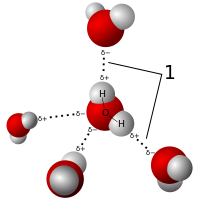
Photo from wikipedia
The photoexcitation of α-diazocarbonyl compounds produces singlet carbene intermediates that react with nucleophilic solvent molecules to form ylides. The zwitterionic nature of these newly formed ylides induces rapid changes in… Click to show full abstract
The photoexcitation of α-diazocarbonyl compounds produces singlet carbene intermediates that react with nucleophilic solvent molecules to form ylides. The zwitterionic nature of these newly formed ylides induces rapid changes in their interactions with the surrounding solvent. Here, ultrafast time-resolved infrared absorption spectroscopy is used to study the ylide-forming reactions of singlet carbene intermediates from the 270 nm photoexcitation of ethyl diazoacetate in various solvents and the changes in the subsequent ylide–solvent interactions. The results provide direct spectroscopic observation of the competition between ylide formation and C–H insertion in reactions of the singlet carbene with nucleophilic solvent molecules. We further report the specific solvation dynamics of the tetrahydrofuran (THF)-derived ylide (with a characteristic IR absorption band at 1636 cm–1) by various hydrogen-bond donors and the coordination by lithium cations. Hydrogen-bonded ylide bands shift to a lower wavenumber by −19 cm–1 for interactions with ethanol, −14 cm–1 for chloroform, −10 cm–1 for dichloromethane, −9 cm–1 for acetonitrile or cyclohexane, and −16 cm–1 for Li+ coordination, allowing the time evolution of the ylide–solvent interactions to be tracked. The hydrogen-bonded ylide bands grow with rate coefficients that are close to the diffusional limit. We further characterize the specific interactions of ethanol with the THF-derived ylide using quantum chemical (MP2) calculations and DFT-based atom-centered density matrix propagation trajectories, which show preferential coordination to the α-carbonyl group. This coordination alters the hybridization character of the ylidic carbon atom, with the greatest change toward sp2 character found for lithium-ion coordination.
Journal Title: Journal of the American Chemical Society
Year Published: 2022
Link to full text (if available)
Share on Social Media: Sign Up to like & get
recommendations!